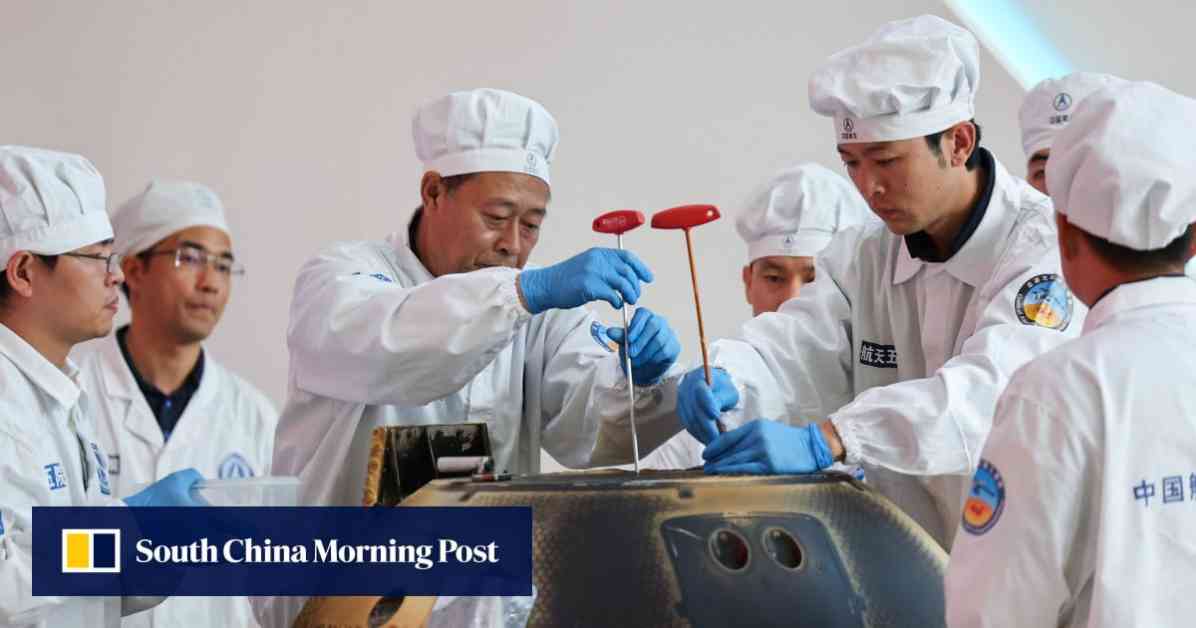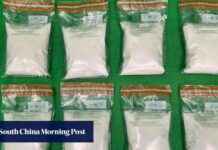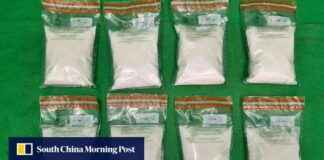Unveiling the Mysteries of the Moon’s Far Side
In a groundbreaking scientific achievement, Chinese scientists have provided a glimpse into the hidden secrets of the moon’s far side through the Chang’e-6 mission. For the first time in history, researchers have unveiled the composition of materials that make up this enigmatic region of our celestial neighbor. The findings reveal a fascinating mixture of basalts and foreign ejecta that differ significantly from the samples collected on the near side of the moon.
According to the researchers involved in the study, the material obtained from the far side of the moon during the Chang’e-6 mission is a unique blend of basalts and foreign ejecta. This composition stands in stark contrast to the predominantly basaltic volcanic rocks that have been previously collected from the near side of the moon. The presence of fresh impact craters surrounding the landing site suggests that the new sample may have resulted from the mixing of mature lunar soil with freshly ejected materials.
An Unprecedented Analysis of Far Side Lunar Samples
The findings of China’s first analysis of far side lunar samples, published in record time just three months after the Chang’e-6 mission brought the material back to Earth, offer valuable insights into the geological composition of this unexplored region. The researchers noted that the material exhibits distinct characteristics when compared to previous lunar samples, all of which have been sourced from the near side of the moon dating back to the Apollo missions of the late 1960s and early 1970s.
One of the notable differences observed in the far side sample is the presence of a higher proportion of light-colored particles, including glass and feldspar, in comparison to the Chang’e-5 sample collected from the moon’s near side. This disparity suggests that the material on the far side may have originated from ejections or impacts, leading to a varied composition that sets it apart from its near side counterpart. Additionally, the new sample’s lower density indicates that it is more loose and porous than previous lunar soils, hinting at potential differences in the geological processes that have shaped the two regions of the moon.
Implications for Lunar Exploration and Beyond
The revelations stemming from the Chang’e-6 mission’s analysis of the moon’s far side hold significant implications for future lunar exploration endeavors and our understanding of the moon’s geological evolution. By shedding light on the unique composition of materials present on the far side, scientists can piece together a more comprehensive picture of the moon’s formation and development over time.
Furthermore, the discovery of distinct characteristics in the far side sample underscores the importance of continued exploration and study of this uncharted territory. By expanding our knowledge of the moon’s composition and geological processes, researchers can glean valuable insights into the broader dynamics of planetary formation and evolution in our solar system.
In conclusion, the Chang’e-6 mission’s analysis of the moon’s far side has opened up new avenues for scientific inquiry and exploration, offering a tantalizing glimpse into the mysteries that lie beyond the familiar face of our celestial companion. As we delve deeper into the secrets of the moon’s hidden far side, we are poised to uncover a wealth of knowledge that will shape our understanding of the moon and beyond for years to come.



















